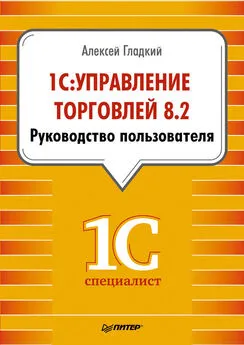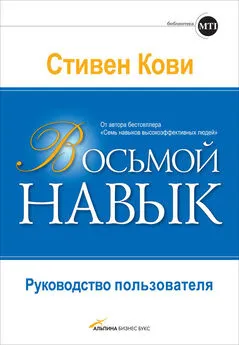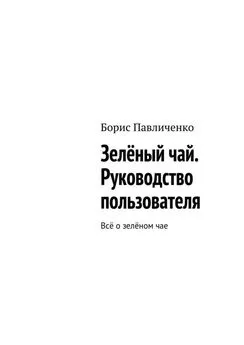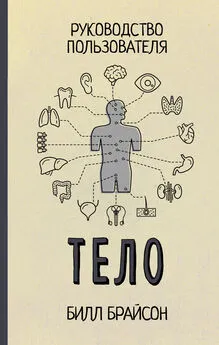Кристи Фанк - Грудь. Руководство пользователя [litres]
- Название:Грудь. Руководство пользователя [litres]
- Автор:
- Жанр:
- Издательство:Литагент 5 редакция «БОМБОРА»
- Год:2020
- Город:Москва
- ISBN:978-5-04-108737-1
- Рейтинг:
- Избранное:Добавить в избранное
-
Отзывы:
-
Ваша оценка:
Кристи Фанк - Грудь. Руководство пользователя [litres] краткое содержание
Грудь. Руководство пользователя [litres] - читать онлайн бесплатно ознакомительный отрывок
Интервал:
Закладка:
22
C. C. Willhite et al., “Systematic Review of Potential Health Risks Posed by Pharmaceutical, Occupational and Consumer Exposures to Metallic and Nanoscale Aluminum, Aluminum Oxides, Aluminum Hydroxide and Its Soluble Salts,” Critical Reviews in Toxicology 44, no. 4 (2014): 1–80.
23
P. D. Darbre et al., “Concentrations of Parabens in Human Breast Tumours,” Journal of Applied Toxicology 24 (2004): 5–13.
24
L. Barr et al., “Measurement of Paraben Concentrations in Human Breast Tissue at Serial Locations across The Breast from Axilla to Sternum,” Journal of Applied Toxicology 32 (2012): 219–232.
25
D. K. Mirick, S. Davis, and D. B. Thomas, “Antiperspirant Use and the Risk of Breast Cancer,” Journal of the National Cancer Institute 94 (2002): 1578–1580.
26
S. Fakri, A. Al-Azzawi, and N. Al-Tawil, “Antiperspirant Use as a Risk Factor for Breast Cancer in Iraq,” Eastern Mediterranean Health Journal 12, nos. 3–4 (2006): 478–482.
27
K. G. McGrath, “An Earlier Age of Breast Cancer Diagnosis Related to More Frequent Use of Antiperspirants/Deodorants and Underarm Shaving,” European Journal of Cancer Prevention 12 (2003): 479–485.
28
World Cancer Research Fund International, “Breast Cancer Statistics,” открыто 10 июня 2017 года, http://www.wcrf.org/int/cancer-facts-figures/data-specific-cancers/breast-cancer-statistics.
29
M. Donovan et al., “Personal Care Products that Contain Estrogens or Xenoestrogens May Increase Breast Cancer Risk,” Medical Hypotheses 68 (2007): 756–766.
30
L. Rosenberg et al., “Hair Relaxers Not Associated with Breast Cancer Risk: Evidence from the Black Women’s Health Study,” Cancer Epidemiology and Prevention Biomarkers 16, no. 5 (2007): 1035–1037.
31
M. E. Herman-Giddens et al., “Secondary Sexual Characteristics and Menses in Young Girls Seen in Office Practice: A Study from the Pediatric Research in Office Settings Network,” Pediatrics 99, no. 4 (1997): 505–512.
32
M. Donovan et al., “Personal Care Products that Contain Estrogens or Xenoestrogens May Increase Breast Cancer Risk,” Medical Hypotheses 68, no. 4 (2007): 756–766.
33
V. R. Jacobs et al., “Mastitis Nonpuerperalis after Nipple Piercing: Time to Act,” International Journal of Fertility and Women’s Medicine 48, no. 5 (2002): 226–231; J. Martin, “Is Nipple Piercing Compatible with Breastfeeding?” Journal of Human Lactation 20, no. 3 (2004): 319–321.
34
N. Kluger and V. Koljonen, “Tattoos, Inks, and Cancer,” The Lancet Oncology 13, no. 4 (2012): e161–e168.
35
K. Lehner et al., “Black Tattoo Inks Are a Source of Problematic Substances Such as Dibutyl Phthalate,” Contact Dermatitis 65 (2011): 231–238.
36
M. Shermer, “Can You Hear Me Now? The Truth about Cell Phones and Cancer,” Scientific American 303, no. 4 (2010): 98.
37
B. Leikind, “Do Cell Phones Cause Cancer?” Skeptic 15, no. 4 (2010): 30.
38
E. Cardis et al., “Brain Tumour Risk in Relation to Mobile Telephone Use: Results of the INTERPHONE International Case-Control Study,” International Journey of Epidemiology 39 (2010): 675; C. Johansen et al., “Cellular Telephones and Cancer: A Nationwide Cohort Study in Denmark,” Journal of the National Cancer Institute 93 (2001): 203; V. G. Khurana et al., “Cell Phones and Brain Tumors: A Review Including the Long-Term Epidemiologic Data,” Surgical Neurology 70 (2009): 205; V. S. Benson et al., “Mobile Phone Use and Risk of Brain Neoplasms and Other Cancers: Prospective Study,” International Journal of Epidemiology 42, no. 3 (2013): 792–802; E. Cardis et al., “Brain Tumour Risk in Relation to Mobile Telephone Use: Results of the INTERPHONE International Case-Control Study,” International Journal of Epidemiology 39, no. 3 (2010): 675.
39
V. G. Khurana et al., “Cell Phones and Brain Tumors: A Review Including the Long-Term Epidemiologic Data,” Surgical Neurology 70 (2009): 205.
40
E. R. Schoenfeld et al., “Electromagnetic Fields and Breast Cancer on Long Island: A Case-Control Study,” American Journal of Epidemiology 158, no. 1 (2003): 47–58.
41
P. K. Verkasalo et al., “Magnetic Fields of High Voltage Power Lines and Risk of Cancer in Finnish Adults: Nationwide Cohort Study,” British Medical Journal 313 (1996): 1047–1051; S. Davis, D. K. Mirick, and R. G. Stevens, “Residential Magnetic Fields and the Risk of Breast Cancer,” American Journal of Epidemiology 155, no. 5 (2002): 446–454.
42
R. K. Adair, “Constraints on Biological Effects of Weak Extremely-Low-Frequency Electromagnetic Fields,” Physics Review A43 (1991): 1039–1048.
43
Collaborative Group on Hormonal Factors in Breast Cancer, “Breast Cancer and Hormonal Contraceptives: Collaborative Reanalysis of Individual Data on 53,297 Women with Breast Cancer and 100,239 Women without Breast Cancer from 54 Epidemiological Studies,” The Lancet 347, no. 9017 (1996): 1713–1727.
44
Jennifer M. Gierisch et al., “Oral Contraceptive Use and Risk of Breast, Cervical, Colorectal, and Endometrial Cancers: A Systematic Review,” Cancer Epidemiology and Prevention Biomarkers 22, no. 11 (2013): 1931–1943.
45
S. A. Narod et al., “Oral Contraceptives and the Risk of Hereditary Ovarian Cancer: Hereditary Ovarian Cancer Clinical Study Group,” New England Journal of Medicine 339, no. 7 (1998): 424–428.
46
G. Nikas et al., “Endometrial Pinopodes Indicate a Shift in the Window of Receptivity in IVF Cycles,” Human Reproduction 14 (1999): 787–792.
47
C. Fei et al., “Fertility Drugs and Young-Onset Breast Cancer: Results from the Two Sister Study,” Journal of the National Cancer Institute 104 (2012): 1021–1027; L. G. Liat et al., “Are Infertility Treatments a Potential Risk Factor for Cancer Development? Perspective of 30 Years of Follow-up,” Gynecological Endocrinology 28, no. 10 (2012): 809–814; L. M. Stewart et al., “In Vitro Fertilization and Breast Cancer: Is There Cause for Concern?” Fertility and Sterility 98, no. 2 (2012): 334–340; A. N. YliKuha et al., “Cancer Morbidity in a Cohort of 9,175 Finnish Women Treated for Infertility,” Human Reproduction 27, no. 4 (2012): 1149–1155; L. A. Brinton et al., “In Vitro Fertilization and Risk of Breast and Gynecologic Cancers: A Retrospective Cohort Study within the Israeli Maccabi Healthcare Services,” Fertility and Sterility 99, no. 5 (2013): 1189–1196.
48
T. N. Sergentanis et al., “IVF and Breast Cancer: A Systematic Review and Metaanalysis,” Human Reproduction Update 20, no. 1 (2013): 106–123.
49
A. Q. van den Belt-Dusebout et al., “Ovarian Stimulation for In Vitro Fertilization and Long-Term Risk of Breast Cancer,” Journal of the American Medical Association 316, no. 3 (2016): 300–312.
50
V. Beral et al., “Breast Cancer and Abortion: Collaborative Reanalysis of Data from 53 Epidemiological Studies, including 83,000 Women with Breast Cancer from 16 Countries,” The Lancet 363, no. 9414 (2004): 1007–1016; K. B. Michels et al., “Induced and Spontaneous Abortion and Incidence of Breast Cancer among Young Women: A Prospective Cohort Study,” Archives of Internal Medicine 167, no. 8 (2007): 814–820; G. K. Reeves et al., “Breast Cancer Risk in Relation to Abortion: Results from the EPIC Study,” International Journal of Cancer 119, no. 7 (2006): 1741–1745; J. Couzin, “Cancer Risk: Review Rules out Abortion – Cancer Link,” Science 299, no. 5612 (2003): 1498.
51
L. M. Stewart, “In Vitro Fertilization and Breast Cancer: Is There Cause for Concern?” Fertility and Sterility 98, no. 2 (2012): 334–340.
52
National Cancer Institute, “Abortion, Miscarriage, and Breast Cancer Risk: 2003 Workshop,” обзор за январь 2010, www.cancer.gov/cancertopics/factsheet/Risk/abortion-miscarriage.
53
V. Beral et al., “Breast Cancer and Abortion: Collaborative Reanalysis of Data from 53 Epidemiological Studies, Including 83,000 Women with Breast Cancer from 16 Countries,” The Lancet 363, no. 9414 (2004): 1007–1016.
54
D. M. Deapen et al., “The Relationship between Breast Cancer and Augmentation Mammaplasty: An Epidemiologic Study,” Plastic and Reconstructive Surgery 77, no. 3 (1986): 361–368.
55
D. M. Deapen et al., “Cancer Risk among Los Angeles Women with Cosmetic Breast Implants,” Plastic and Reconstructive Surgery 119, no. 7 (2007): 1987–1992.
56
E. C. Noels et al., “Breast Implants and the Risk of Breast Cancer: A Meta-analysis of Cohort Studies,” Aesthetic Surgery Journal 35, no. 1 (2015): 55–62.
57
K. Kjøller et al., “Characteristics of Women with Cosmetic Breast Implants Compared with Women with Other Types of Cosmetic Surgery and Population-Based Controls in Denmark,” Annals of Plastic Surgery 50, no. 1 (2003): 6–12.
58
A. Stivala et al., “Breast Cancer Risk in Women Treated with Augmentation Mammoplasty,” Oncology Reports 28, no. 1 (2012): 3–7.
59
M. McCarthy, “Rare Lymphoma Is Linked to Breast Implants, US Officials Conclude,” British Medical Journal 356 (2017).
60
K. Lund, M. Ewertz, and G. Schou, “Breast Cancer Incidence Subsequent to Surgical Reduction of the Female Breast,” Scandinavian Journal of Plastic and Reconstructive Surgery and Hand Surgery 21, no. 2 (1987): 209–212; M. Baasch et al., “Breast Cancer Incidence Subsequent to Surgical Reduction of the Female Breast,” British Journal of Cancer 73, no. 9 (1996): 961; J. D. Boice et al., “Cancer Following Breast Reduction Surgery in Denmark,” Cancer Causes and Control 8, no. 2 (1997): 253–258; J. D. Boice et al., “Breast Cancer Following Breast Reduction Surgery in Sweden,” Plastic and Reconstructive Surgery 106, no. 5 (2000): 755–762; M. H. Brown et al., “A Cohort Study of Breast Cancer Risk in Breast Reduction Patients,” Plastic and Reconstructive Surgery 103, no. 8 (1999): 1674–1681; J. P. Fryzek et al., “A Nationwide Study of Breast Cancer Incidence Following Breast Reduction Surgery in a Large Cohort of Swedish Women,” Breast Cancer Research and Treatment 97, no. 2 (2006): 131–134; L. A. Brinton et al., “Breast Cancer Risk in Relation to Amount of Tissue Removed During Breast Reduction Operations in Sweden,” Cancer 91, no. 3 (2001): 478–483; L. A. Brinton et al., “Breast Enlargement and Reduction: Results from a Breast Cancer Case-Control Study,” Plastic and Reconstructive Surgery 97, no. 2 (1996): 269–275.
Читать дальшеИнтервал:
Закладка:
![Обложка книги Кристи Фанк - Грудь. Руководство пользователя [litres]](/books/1062698/kristi-fank-grud-rukovodstvo-polzovatelya-litre.webp)









